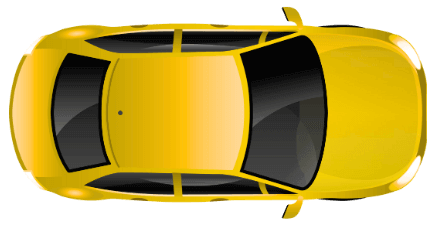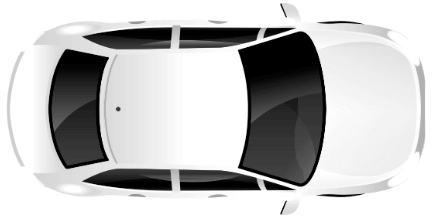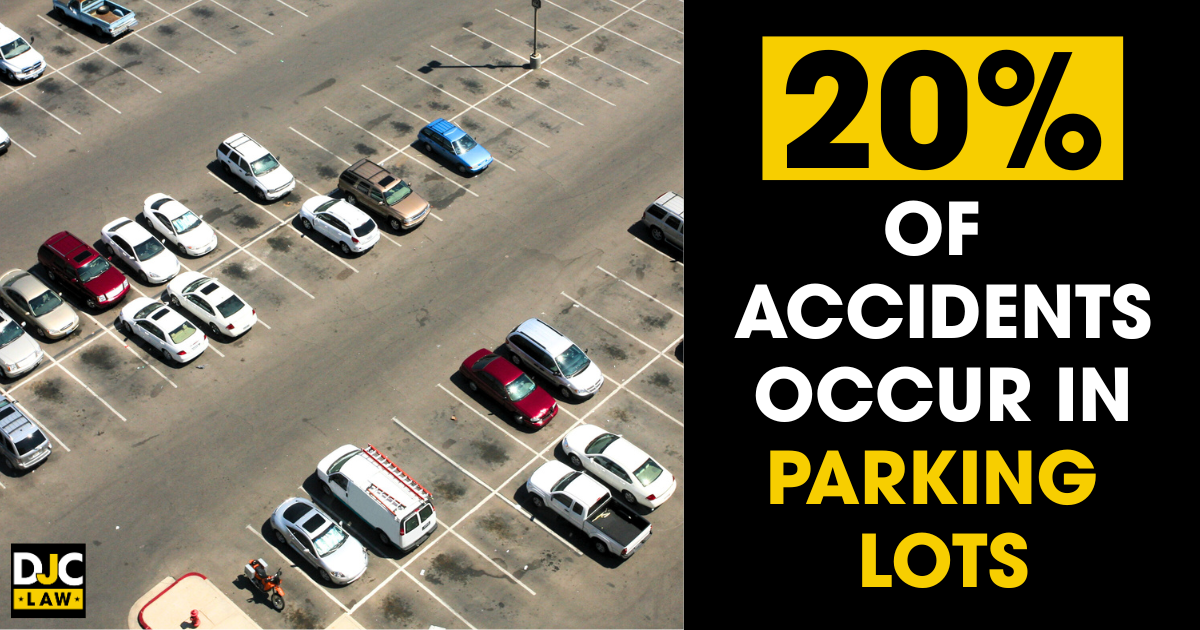Play the interactive game:





What’s the secret to mastering how to parallel park like a pro?
If you’re one of the 49% of Americans mentioned in The Zebra, chances are you drive away and find another place to park. Approximately half of drivers suffer from something called “parallelophobia,” or a fear of parallel parking, because they’re afraid of holding up traffic or hitting another vehicle.
However, mastering the art can make your life infinitely simpler, especially if you’ve been relying on unreliable technology. If you’ve been involved in an accident while parking or due to traffic hazards, speaking with an experienced Austin car accident lawyer can help protect your rights. In this guide, we discuss the art of parallel parking.

Key Takeaways
- Parallel parking is one of the trickiest driving maneuvers available, with half of Americans claiming anxiety when attempting it.
- Follow the five-step rule for managing parallel parking: check your surroundings, turn on your turn signal, position your vehicle, angle your vehicle into the space, and perform a final check.
- An easy way to begin parallel parking is the 1:2:1 formula: one complete steering wheel turn to the left, two to the right, and one to the left to align your vehicle within your space entirely.
- Ensure that your vehicle has sufficient space to fit into a space. A suitable space must be 1.5 times the length of your car.
- Practicing as much as possible is the best way to get better at parallel parking. Try working with different vehicle sizes and practicing in different conditions, such as on hills and at night.
- If you’re involved in a parallel parking accident, it’s your legal obligation to leave your contact details with the driver.
- Speak to an attorney if you were involved in a parallel parking accident and must claim compensation through the other driver’s insurance company.
How Do You Parallel Park Step-by-Step?
Parallel parking is about establishing a system. Check your surroundings, signal your intentions, position your vehicle properly, and angle your vehicle into the space.
It sounds simple enough, but many Americans are too scared even to try. It’s why 94.3 The Point reported that drivers saw a 57% increase in their average heart rates when confronted with the problem.
So, here’s how to parallel park like a pro.
Step One: Assess Your Surroundings
The first step is to assess what’s going on around you. Firstly, determine whether the space is large enough for your vehicle. There’s nothing more frustrating than hitting a parked vehicle because you tried to edge into a space that was too small. According to the IIHS, 20% of accidents occur in parking lots.

The rule of thumb is that the minimum space size should be 1.5 times greater than the length of your vehicle. Just eyeball it, and you should have more than enough space. Next, check that the coast is clear. Use your mirrors and turn in your seat to check your blind spots.
Step Two: Signal Your Intentions
Tell other drivers what you’re trying to do so they don’t think you’ve broken down. Always keep your turn signal switched on before you attempt your parallel parking maneuver. It’s not just about telling drivers why you’ve come to a stop, but to tell them to give you sufficient space to allow you to park.
Step Three: Position Your Vehicle Next to the Parking Spot
The key to parallel parking successfully is getting into the correct position. Ensure your car is lined up with the car already parked in front of the space. Leave up to three feet of space between your car’s passenger side and their driver side.
The reason for this position is that the art of parallel parking is to enter the space at a 45-degree angle.
Step Four: Execute the Initial Backing Maneuver
With your position established, launch your initial backing maneuver. The easiest way to do this is to sit up in your vehicle straight and turn your shoulder to a 90-degree angle. With your eyes on your rear, begin backing up slowly.
Keep backing up until the middle of your vehicle is aligned with the bumper of the car in front of the space. Hold your position with your signal on if someone else approaches from behind.
Step Five: Angle Your Vehicle Into the Parking Space
If you’ve performed the initial maneuver correctly, you should approach the curb at a 45-degree angle. Continue until you can spot the vehicle’s headlights behind you in your side mirror.
Turn the steering wheel in the opposite direction and continue reversing into the space. Your vehicle should be fully aligned with the vehicle in front of and behind you.
Step Six: Adjust and Center Your Vehicle
Parallel parking also means centering your vehicle between the other two cars and leaving enough space for them to exit. Likewise, you must leave enough curb space based on your state’s laws. In most states, this is anywhere between 12 and 18 inches from your wheel to the curb.
Don’t worry if you reverse too far and your rear wheel hits the curb. This should leave you with enough space to turn your wheel to the right and align your vehicle so that you’ve left enough space and are parallel with the road.
Step Seven: Final Checks Before Leaving Your Vehicle
Before turning off the ignition and going about your business, perform a couple of final checks. Ensure you’re far enough away from the curb to avoid getting a traffic citation. Likewise, ensure there are two to three feet in front of and behind your vehicle so that you’re not blocking someone else in.
Is There a Formula for Parallel Parking?
Many driving instructors rely on a specific formula to aid students in learning how to parallel park with confidence. This is the 1:2:1 Method, and it builds that muscle memory as part of a structure that drivers can follow to manage any parallel parking situation.
According to FenderBender.com, Texas is ranked 14th in terms of parallel parking anxiety, indicating that drivers in the Lone Star State can benefit from this. Essentially, the formula focuses on the movements of your steering wheel, indicating one left turn, two right turns, and one left turn.
What is the 1:2:1 Method of Parallel Parking?
The 1:2:1 parallel parking method refers to the number of turns on your steering wheel. It begins when you reach the appropriate alignment and start backing into the space.
Once you’re backing up slowly to the curb, you turn your steering wheel once in full to the left. After reaching the 45-degree angle, the next step is turning the steering wheel two complete turns to the right. Finally, you’ll turn your steering wheel to the left in one complete turn to straighten your wheels.
The benefit of this is being able to follow a tried-and-tested formula while you keep an eye on your vehicle’s angle and any approaching hazards.
Why Parallel Parking is Important for Drivers
Parallel parking is often dismissed as a skill you have to perform once as part of a road test to get your driver’s license and then never turn to it again. However, as space becomes rarer with more vehicles on the roads, knowing how to parallel park gives you an inherent advantage.
Here’s why it’s a helpful skill to have:
- Parallel parking allows drivers to make use of every foot of parking space available.
- In many towns and cities, you won’t find a parking space if you can’t parallel park.
- Some states still have parallel parking as a requirement. However, per Wired, 16 states no longer include it in their driving tests.
- Learn better vehicle control, especially at lower speeds. It’s a skill that could help you out of tight situations elsewhere.
- Improve your situational awareness. Developing this skill can also help you handle other scenarios with better decision-making and spatial awareness skills.
Common Challenges of Parallel Parking
The biggest challenge of parallel parking is the general lack of practice that drivers receive. If you don’t live in a state where it’s part of the driver’s test, the chances are you’ll never parallel park your vehicle unless someone else teaches you.
But why do so many drivers find parallel parking so complex?
- Misjudging Space – Drivers often find it difficult to determine whether they’ve got enough space to fit into.
- Alignment Problems – Drivers may have difficulty judging the correct angle when backing into the space.
- Avoiding an Accident – One of the leading reasons drivers avoid parallel parking entirely is because they’re too scared of hitting a parked vehicle. For many, it’s just not worth having to make an insurance claim.
- Steering – Parallel parking relies on smooth and precise steering. Drivers often lack sufficient control, resulting in oversteering and understeering.
- General Awareness – Younger drivers often lack the awareness and observational skills that only come through experience. Missing out on a blind spot or not checking your mirrors enough can quickly result in disaster.
Younger drivers often lack the skills to execute a parallel parking maneuver. Additionally, drivers are nervous from the very beginning, and a lack of confidence causes them not to even attempt it.
Essential Preparations for Successful Parallel Parking
Successful parallel parking starts and ends with the preparation. The most common mistake people make is not allowing themselves enough of a gap between their car and parked cars and coming in at the wrong angle.
But it also comes down to knowing your vehicle, its size, and its maneuverability. If you judge any part of it incorrectly, you’re setting yourself up for an accident.
Choosing the Right Spot
The right spot is one that you can comfortably fit your vehicle in and leave enough space for the car in front and behind to get out.
In practice, this means that you should look at a space at least 1.5 times the length of your vehicle. Although experienced drivers can get by with less space, attempting anything smaller is unwise until you’re confident in your parallel parking abilities.
Checking Your Vehicle’s Size and Maneuverability
Your vehicle will determine how much space you actually need. What’s good for a compact car won’t be good for a pick-up truck.
Here’s an example of the dimensions for the most common class of vehicle:
- Compact Car – 20 feet of space and seven feet of width.
- Standard Car – Up to 26 feet of space and eight feet of width.
- SUV/Truck – Up to 30 feet of space and up to nine feet of width.
Ideally, you want three feet of space between yourself and the lead vehicle. It’s enough space to allow you to perform the turning maneuver without worrying about swinging wide and leaving yourself in an awkward orientation.
Advanced Tips and Techniques for Perfecting Your Parallel Parking
Perfecting your parallel parking comes with practice, but progress will be slow if you don’t have the foundations in the first place. Other than practicing, practicing, and more practicing, there are certain parallel parking tips that can accelerate your progress.
Using Reference Points to Improve Accuracy
The secret to parallel parking is using reference points. These visual cues will show you how to align your vehicle and guide it into the space.
Ideally, you want to wait until your car’s rear bumper aligns with the car’s rear bumper parked in front before you turn your wheel toward the curb. Use your side mirror, and when your rear bumper clears the front car’s rear, straighten up your wheel.
Finally, once you’ve got the front of your car into the space, turn in the opposite direction to complete a perfect parallel park.
Practicing With Different Vehicle Sizes
Mastering parallel parking with your vehicle is the first step to mastering the technique. Boost your confidence by practicing with other vehicles since every vehicle type will function differently. Plus, different vehicles will give you different skills and more adaptability.
For example, a compact car is easy to maneuver, making it ideal for practicing your angles and learning spatial awareness. On the other hand, doing the same with an SUV means earlier turns and wider clearances, forcing you to rely more on your mirrors and instincts.
Nighttime Parallel Parking Strategies
Everybody knows that driving at night adds a new level of difficulty. Nevertheless, you don’t want to be that driver who can only parallel park between certain hours.
So, how do you improve your after-hours parallel parking?
- Use your headlights and rear lights.
- Take it slower than you usually would.
- Use reflective surfaces, like license plates and road paint, to help judge your angles and distance.
- Use your car’s sensors and a backup camera to assist.
Common Mistakes to Avoid When Parallel Parking
Parallel parking mistakes often result from poor positioning and failure to assess your angles. This can throw drivers into a vicious cycle of oversteering, understeering, and overcorrecting. It also doesn’t help if you have other cars behind you and pedestrians getting in the way, especially if you need a few tries to negotiate those tight spaces.
Unfortunately, these mistakes can lead to an accident, resulting in an insurance claim, or even discourage you so much that you never attempt parallel parking again. So, here’s how to overcome these rookie errors.
Poor Positioning and Angling Issues
Get into the wrong position from the start, and you’ve already made your life infinitely more complex.
If you’re too close to the car you’re parking behind, you won’t have enough space to get in. Park too far away, and you’ll throw off your angle, which is why the two to three feet recommendation stands.
The other issue is getting your angles wrong. Turn too late or early, and you’ll hit the curb and find yourself crooked. Likewise, if your rear bumper isn’t aligned with the car behind you, you’ll throw off your entry and be misaligned.
Overcorrecting and Oversteering
The ideal parallel parking maneuver is designed to be simple and smooth. However, newcomers often panic, and so they end up throwing the steering wheel back and forth. These jerky wheel movements make your vehicle even harder to control.
Turning too sharply as part of an oversteer will leave the front of your car in traffic or the back of your car sitting on the curb. Alternatively, if you haven’t turned your wheel back to center in time, you’ll be left with the same result, forcing you to restart.
Ignoring Surrounding Traffic and Pedestrians
You’re not the main character, and your parallel parking maneuver doesn’t happen in a bubble. The key to mastering this technique is having the appropriate situational awareness.
Here are three common problems and how to get out of them:
- Blocking Traffic – Don’t forget to signal before you start, or you could end up blocking traffic and causing a road rage incident. According to Octo Telematics, 78% of drivers admitted to committing at least one act of aggression in the past year.
- Failing to Check Your Blind Spots – Pedestrians and cyclists are especially vulnerable when they enter your blind spots. Check your mirrors and look over your shoulder before you start moving.
- Rushing – Don’t let anyone around you cause a rush. Ignore honking cars behind you. Take a deep breath and go through the motions. The extra few seconds are a far better option than making a mistake and causing an accident.
The Role of Technology in Parallel Parking
Next-generation technology is making parallel parking more straightforward. With vehicles possessing sensors, cameras, and other parking assist options, it’s become easier to precisely navigate into your chosen parallel parking spot.

According to a study from AAA, drivers using parking assistance experienced an 81% reduction in curb strikes and 47% fewer movements than those who went without. It’s an example of how semi-automated and fully automated systems are making parallel parking easier and reducing the number of accidents.
However, despite the advancements in parking assistance technology, it’s vital not to rely exclusively on them. The accuracy and reliability of these systems vary heavily, and different conditions, such as bad weather and low-light conditions, can make them less effective.
Generally, we still recommend that drivers learn how to parallel park without auto park technology initially.
Legal Considerations for Motor Vehicle Accidents Involving Parking
Accidents happen, and parallel parking mishaps are no exception. Knowing what to do if someone hits you or you hit someone else is critical to pursuing an insurance claim and complying with the law.
Regardless of which side of the accident you’re on, you must leave your contact and insurance details if you damage another vehicle. Beyond that, it’s a matter of deciding who’s liable for the accident.
Liability in Accidents While Parallel Parking
In no-fault states, liability is irrelevant because both parties claim damages via their own insurers regardless of who’s at fault. However, Texas is an at-fault state, meaning it’s the at-fault party responsible for covering all damages resulting from a parallel parking accident.
Although it may be obvious that the at-fault driver is the person doing the parallel parking, this isn’t always true. Sometimes, fault may be shared because of Texas’ comparative negligence laws.
For example, both parties might share liability if a car was parked incorrectly, such as being positioned partially in traffic, and you pull forward into it. It’s up to you and an experienced car accident attorney to gather evidence and assess who was to blame and to what extent.
Remember, Texas’ laws mean that if you’re 51% or more responsible for an accident, you cannot claim any monetary compensation, which is known as the 51% bar rule.
Your Legal Rights if Someone Hits Your Parked Car
You don’t have to be present at the time to claim compensation if someone hits your car in the process of parallel parking.
In reality, many drivers who hit a parked car don’t leave their details behind and flee the scene, only for you to realize that you’ve been in an accident when you return. So, what do you do in this situation?
- Start by calling 911 and filing a police report. It’s a criminal offense to flee the scene of an accident without leaving details.
- Seek evidence that may help identify the driver, such as security camera footage from local businesses or eyewitnesses.
- Claim through your uninsured/underinsured motorist coverage.
Unfortunately, if the driver can’t be identified, and you don’t have uninsured/underinsured motorist coverage. In that case, your auto insurer will be unable to help, and you’ll have to pay the damages out of your own pocket.
Towing and Legal Issues After a Parking Accident
Your vehicle may be towed if it’s hit by another vehicle, such as if your car has been hit with enough force to move it onto the sidewalk or the road. Although it may sound simple enough to handle, this can create even more headaches.
For example, the towing company may fail to leave proper contact details or cause further damage to your vehicle during the process. Likewise, many towing companies inflate their fees illegally to scam drivers.
Know that if your car was hit by someone else and your vehicle was towed, any charges may be claimed by you as the injured party.
When to Consult a Personal Injury Lawyer for Legal Help
Seeking the support of an experienced personal injury lawyer puts an expert in your corner who can defend your legal rights, deal with insurance adjusters, and gather evidence to build the strongest possible case.
Not every minor accident requires the intervention of an attorney, but it’s wise to have one on hand to intervene. Any complex cases that involve injuries, disputed liability, multiple parties, or insurance companies that want to play hardball should necessitate a call to a lawyer in your area.
At DJC Law, we regularly represent drivers who have suffered injuries due to a parallel parking mishap. If you want to learn more about claiming compensation and holding an at-fault party to account, get in touch with the law firm that’s won more than $400 million in settlement money today.


